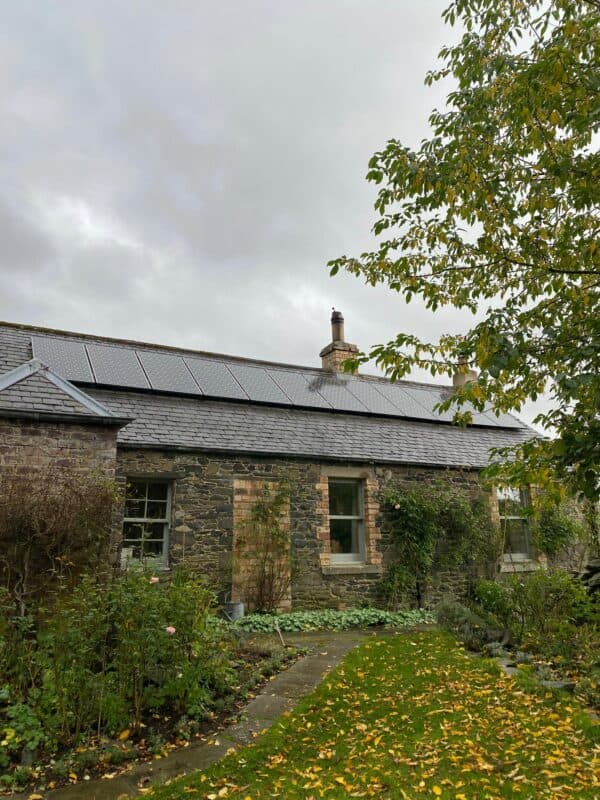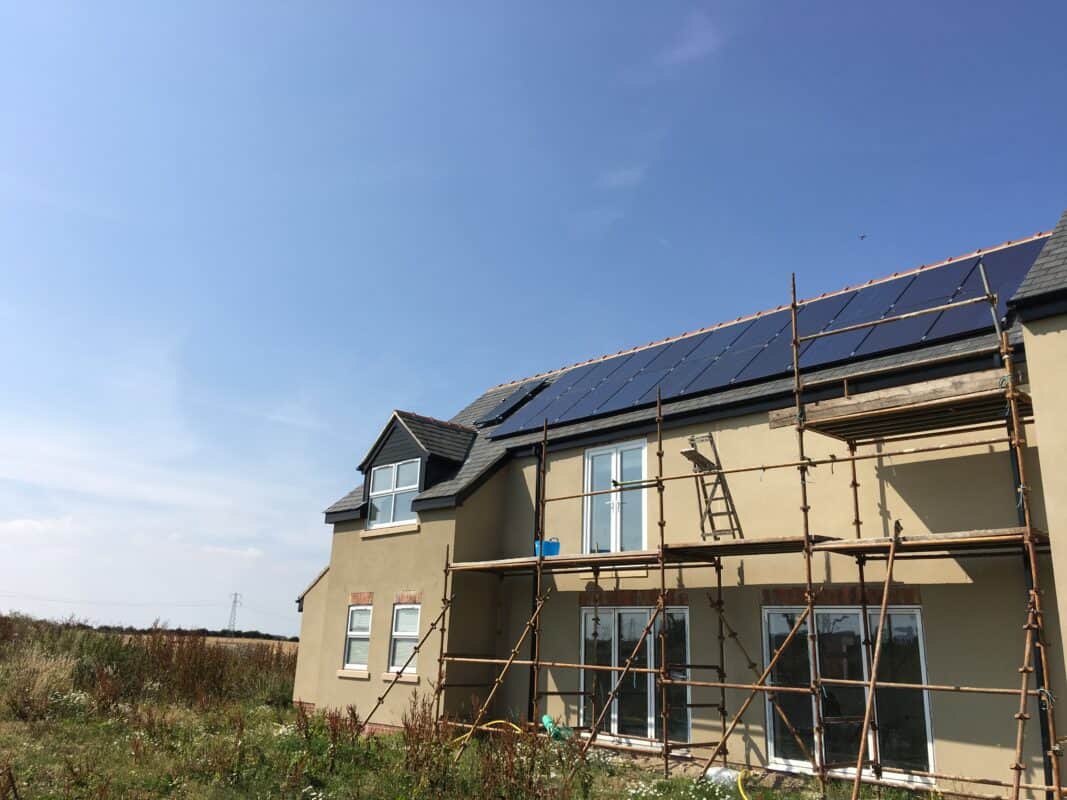Off-Grid Residential
If your home or project is in a remote location, connecting to the electricity grid can pose a huge cost. If you are in this situation, don’t panic! We can help with an off grid residential system.
We offer the following services to off-grid residential customers:
- System design and configuration.
- Full system bill of materials and supply.
- Installation and project management.
- Top quality Victron equipment.
- Fully self-contained cabinet systems with optional climate control.
- Planning permission applications.
- Monitoring and maintenance agreements.
- Technical support.
You planned all your costs meticulously, but the electricity connection costs can come as an absolute shock. Some people have reported five-figure quotations simply to power their new home up. This can completely blow up a budget and make a project seem unfeasible.
Why not simply go off grid, instead?
An off-grid residential solar installation sounds expensive, but it can often be significantly cheaper than the DNO connection cost. Plus, a high proportion of your electricity will be clean, free power from the sun. And don’t forget that you won’t need to pay any standing charge and you won’t have to worry about your bills suddenly increasing!
We will ensure that your system will be able to cater for all your needs and we can future-proof for any additional loads like electric vehicle chargers, so you’ll never need to worry about the lights turning off.
You won’t have to worry about power cuts again!
In short, no.
That doesn’t mean that you will be able to run off renewable electricity 100% of the time; you will need a generator for backup when the solar or wind generation is insufficient.
However, we will plan your system to maximise the amount of clean, free electricity that you generate. No one wants to be burning expensive fossil fuels when they don’t need to!
Absolutely! Even without renewables, generators are much more efficient when they’re close to full load but run for a shorter time. You achieve this by using the generator to charge batteries or supplement high loads, rather than as the main power.
In fact, you could reduce your generator costs by up to 48% with batteries alone. If you add renewables, this could decrease by up to 95%!
When you have a grid-connected renewables system, if you generate more electricity than you can use or store, the excess is sent to the grid and you may be paid for it.
When you are off grid, where does this excess go?
In this situation, the maximum power point trackers (MPPTs) which manage the renewable generation will simply reduce the current flow and ‘curtail’ the excess power, meaning the generation will be safely reduced.
If that seems a bit wasteful, we can plan in a ‘dump load’ to take this extra power and turn it into something useful. For example, if you have a cylinder to store hot water, we can install a device that redirects any excess generation to heat the water.
Usually, you won’t need planning permission.
If you are installing off grid residential solar on a pitched roof, as long as the panels are at least 20cm from the external edge of the roof and do not go higher than the top of the roof, they are covered under permitted development and do not need planning permission. This rule is in place to prevent dangerous uplift in windy conditions.
If you’re installing solar on a flat roof, it must be at least one metre from any external edge and not protrude higher than one metre from the highest point of the roof to be covered under permitted development.
Ground-mounted arrays (in gardens, etc), can be up to 9m squared under permitted development. In reality, this is only around 3 or 4 panels, so you’ll probably need to obtain planning permission for ground-mounts. We offer a planning application service for solar if you want some help.
You can have up to one wind turbine per property under permitted development, but the rules are challenging to follow for many homeowners: The turbine can be a maximum of 3 metres above the top of the roof (excluding chimneys) or 15 metres high in total, whichever is lower. It also cannot be less than 5 metres from any boundary.
If you would like help with your application, visit our Planning Permission Service page to find out more.





